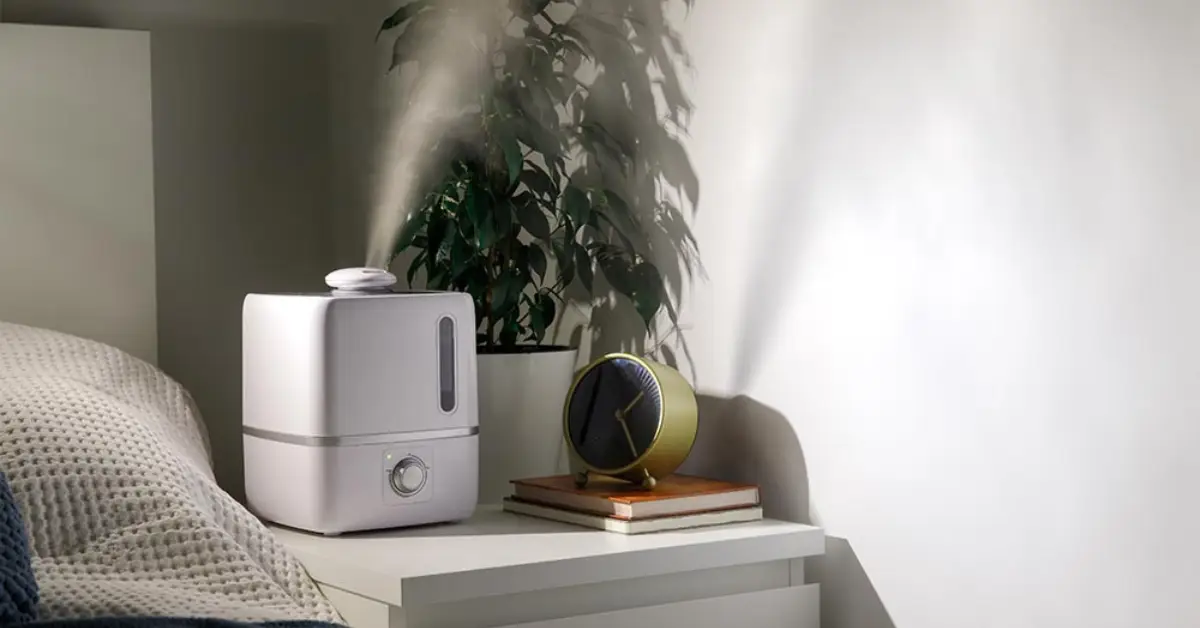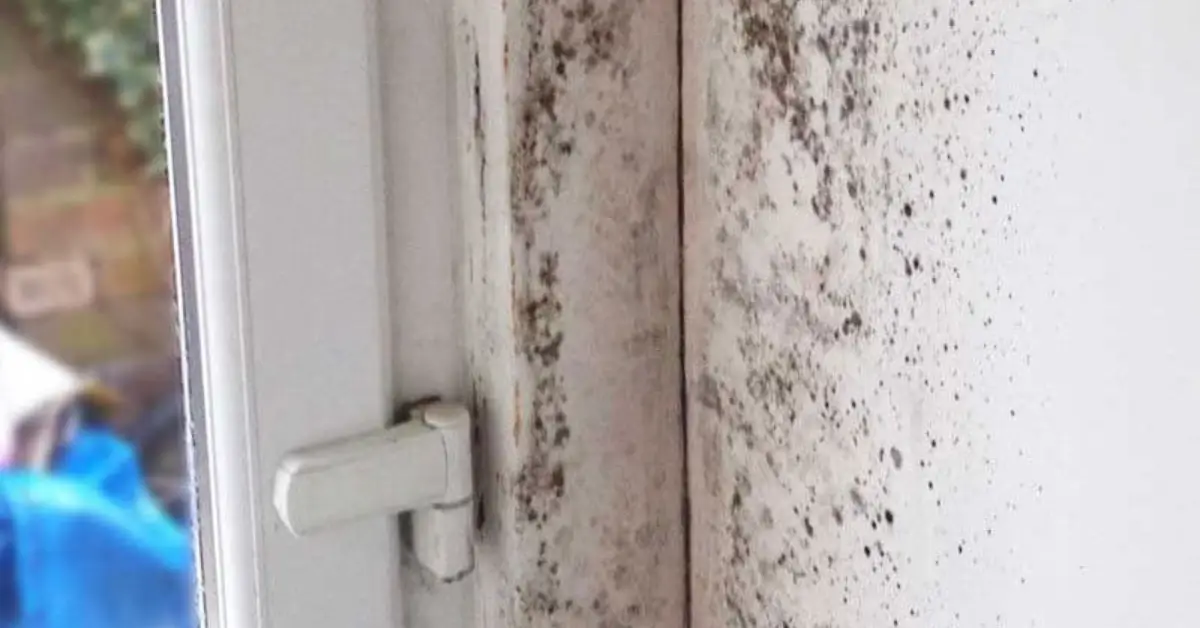Keep Your Home Healthy and Comfortable with Proper Humidity
When I first started paying attention to my home’s humidity, I didn’t realize how much it could affect my health, comfort, and even my furniture. You might think, “It’s just air, how much can it matter?” But the truth is, the right balance of moisture in the air can make your home feel cozy, protect your family from colds and allergies, and even prevent damage to wood floors or paint. Over the years, I’ve learned that keeping your home in the ideal humidity range isn’t complicated, but it does require knowing what “ideal” really means—and why it shifts with the seasons.
In this guide, I’ll walk you through exactly what levels you should aim for, how to measure them, and practical ways to maintain that perfect balance without turning your house into a science experiment.
Why Indoor Humidity Matters (Health, Comfort & Building)
When I first started paying attention to the humidity in my home, I realized it wasn’t just about comfort—it impacts our health, the condition of our house, and even how we feel day to day. Let me break down why getting it right matters.
The Health Implications of Low Humidity
When the air in your home is too dry—usually below 30% relative humidity—it can wreak havoc on your body. I’ve noticed it most in the winter months when my skin feels tight, my throat gets scratchy, and even small colds seem to linger longer. Low humidity can:
- Dry out your skin and lips, making them more prone to irritation
- Irritate your nasal passages and airways, sometimes leading to nosebleeds
- Increase the survival rate of viruses, making colds and flu more likely
I’ve also seen discussions on forums like Reddit where people say keeping the indoor humidity around 40–60% makes a huge difference for both comfort and health. It’s amazing how something so invisible can impact your wellbeing every single day.
The Problems with High Humidity
On the flip side, too much moisture in the air—over 60% RH—can cause serious problems. Personally, I noticed a musty smell creeping into my basement once the summer humidity spiked, and sure enough, tiny spots of mould started appearing. High humidity can:
- Encourage mould and mildew growth, which affects your health and can trigger allergies
- Increase dust mite populations
- Cause condensation on windows and walls, which can damage your home
According to the Center for Energy and Environment, homes with consistently high humidity often see long-term structural issues if left unchecked.
Impact on Your Home: Furniture, Structure, and Energy Use
Humidity doesn’t just affect people—it affects everything inside your home. I’ve had to repair wooden furniture that warped from too much moisture and repaint walls that started peeling. Too dry, and you can see gaps forming in wood floors or doors that won’t close properly. Here’s what I’ve learned:
- Wood expands and contracts with humidity swings, causing warping or cracking
- Paint and wallpaper can peel or bubble if the air is too damp
- Doors and windows may stick or fail to seal properly
- Energy efficiency drops when your HVAC system overcompensates for humidity extremes
Even small swings can add up over time, so keeping humidity in the right range protects your investment and your comfort.
Link to Comfort: Sleep and Temperature Perception

I also found that humidity directly affects how comfortable I feel—even if the thermostat says it’s perfect. Too dry or too moist air can make the room feel hotter or colder than it actually is. Studies show that maintaining 30–50% RH helps:
- Improve sleep quality, reducing nighttime congestion or dry throats
- Make indoor temperatures feel more stable, so you rely less on heating or cooling
- Reduce irritations like dry eyes or skin discomfort
What is “Ideal Humidity”: The Expert‑Agreed Range
Now that you understand why humidity matters, the next question is obvious: what range should you aim for? From my research and personal experience, experts generally agree that the sweet spot for most homes is between 40–60% relative humidity.
Common Recommended Ranges
- Many sources, including Carrier, suggest a range of 30–60% is acceptable for most homes
- For optimal comfort, preservation of furniture, and health benefits, 40–60% RH is often recommended by Aprilaire.
- Staying within this range minimizes health risks, keeps your house in good shape, and makes everyday living more comfortable
Seasonally Adjusted Targets
Humidity needs shift with the seasons, and I’ve learned it’s important to adjust rather than keeping one fixed number year-round:
- Winter: Outdoor cold air can cause condensation if indoor RH is too high. I usually aim for under 35% to prevent window fogging and mould in corners
- Summer / Humid Climates: High outdoor moisture can push indoor RH over 60%, so keeping it below 50% helps prevent mould and sticky air
By paying attention to these seasonal tweaks, you can maintain a home that feels comfortable, healthy, and protected year-round.
How to Measure and Monitor Your Home’s Humidity
Before you start adjusting anything, you need to know where your home currently stands. I can’t stress enough how helpful it is to have real numbers rather than guessing by how the air feels. Here’s how I approach it:
Tools: Hygrometer, Humidistat, Smart Sensors
I keep a few devices around to get accurate readings:
- Hygrometer: Simple, affordable, and gives instant RH readings
- Humidistat: Often integrated with HVAC systems or standalone; can trigger humidifiers/dehumidifiers automatically
- Smart sensors: Connect to your phone and give alerts if humidity goes out of range
Using a combination of these lets you track trends rather than relying on a single snapshot.
Where to Measure
Not every corner of your home is the same. I’ve learned to check:
- Bedrooms and living spaces where you spend most of your time
- Basements and crawl spaces, which can be more humid
- Near exterior walls and windows, where condensation can occur
Checking in these spots helps you get a full picture of your home’s moisture levels.
What Readings to Look Out For
Once you have your devices in place, I usually check:
- Daily readings: In the morning or evening, when temperature and humidity stabilize
- Acceptable ranges: Aim for 40–60% RH in most rooms
- Red flags: Above 60% or below 30% means it’s time to act
Keeping a log for a week or two helps you understand patterns and plan adjustments.
How to Achieve and Maintain the Ideal Humidity Level
Once you know your numbers, the next step is taking action. I’ve found the key is combining practical methods with a bit of seasonal awareness.
When Humidity is Too Low

If your home is dry, here’s what I do:
- Humidifiers: Place them in key rooms, and refill regularly
- Dry laundry indoors: Adds moisture naturally without chemicals
- Houseplants: They release humidity as they breathe
- Cooking without lids: Boiling water or simmering sauces increases moisture in the air
Tip: Don’t overdo it. Excess humidity can cause condensation on windows, which leads to mould. I usually check readings daily to make sure I’m not crossing the upper threshold.
When Humidity is Too High
When the air feels sticky or you notice condensation, it’s time to reduce moisture:
- Dehumidifier: Great for basements or problem rooms
- Air conditioning: Helps remove excess moisture during summer
- Ventilation: Open windows or use exhaust fans in kitchens and bathrooms
- Fix leaks and improve insulation: Stops humidity from creeping in through walls or ceilings
Room-by-Room Considerations
Different rooms have different needs. I treat them accordingly:
- Bedroom: Keep around 40–50% for comfort and sleep quality
- Basement: Below 50% to prevent mould and musty smells
- Kitchen/Bathroom: Ventilate heavily since these generate moisture
- Living areas: Aim for 40–60% for general comfort
Seasonal Adjustments
Humidity needs shift with the seasons. I adjust my settings:
- Winter: Lower humidity to prevent condensation and frost on windows. One simple lüften habit I follow to improve indoor winter air quality goes hand in hand with maintaining the right humidity, and it has made a noticeable difference in my home comfort.
- Summer: Allow slightly higher levels but monitor for mould or sticky air
Maintenance Tips
Maintaining devices is just as important as using them:
- Clean humidifiers and dehumidifiers regularly to prevent mould and bacteria
- Calibrate sensors if you notice readings that seem off
- Replace water filters in systems to maintain efficiency
By combining monitoring, adjustments, and regular maintenance, I’ve been able to keep my home in that sweet spot where it feels comfortable, healthy, and safe.
Special Situations & Considerations
Not all homes are the same, and sometimes the “ideal” humidity range needs a little adjustment. Over the years, I’ve learned that understanding your specific situation can prevent problems before they start.
Homes in Very Cold Climates

If you live where winter temperatures drop well below freezing, condensation becomes a real concern. I’ve noticed it most on north-facing windows and poorly insulated walls. High indoor humidity in winter can:
- Cause frost or ice to form on window panes
- Lead to water pooling and eventual mould growth
- Damage paint and wallpaper over time
The key is to keep indoor RH lower in extreme cold—usually below 35%—while still maintaining enough moisture to avoid dry skin and throat irritation.
Old Houses vs New Builds
Older homes often have less insulation and more air leaks, which makes humidity levels fluctuate. I’ve found that:
- Old homes can be drier in winter and more humid in summer
- New builds with tight air-sealing maintain humidity more consistently, but can trap moisture if ventilation is poor
Adjusting your devices and monitoring trends is essential depending on your home’s age and construction.
Allergy and Asthma Households
For anyone sensitive to dust mites, mould, or allergens, even a few percentage points matter. I’ve learned that:
- Keeping RH closer to 40–50% can reduce allergen growth
- Slight deviations outside the “normal” range can trigger symptoms
Small adjustments in humidifiers and dehumidifiers can make a huge difference for vulnerable family members.
Homes with Special Materials
If your home has wood floors, musical instruments, or artwork, humidity control becomes critical. I personally take extra care with:
- Wood furniture and floors, which expand or contract with humidity swings
- Musical instruments, which can crack or warp if RH fluctuates too much
- Art and collectibles, which may deteriorate with high or very low moisture
Maintaining a stable 40–60% range is usually safe for most items, but I monitor more closely for delicate materials.
Regional Considerations
Your climate matters. For example:
- Tropical or coastal areas: Homes tend to be more humid naturally; dehumidifiers are essential
- Desert or winter-heavy climates: Homes tend to be very dry; humidifiers help prevent skin and respiratory issues
Understanding your regional climate helps you make smarter adjustments without overcompensating.
Impact on Pets and Houseplants
I’ve noticed that pets and indoor plants can also influence the ideal range. Plants may need 40–60% RH, but raising the entire house’s humidity for them can sometimes cause mould problems. I try to balance individual needs with the overall home environment to keep everyone safe.
Common Mistakes & Myths about Home Humidity
Even after learning all this, I’ve seen plenty of people fall into traps when managing their indoor humidity. Here are the most common mistakes I’ve noticed:
Myth: “Higher Humidity Always Means More Comfort”

It’s tempting to crank up the humidity when the air feels dry, but more isn’t always better. High RH can:
- Make the air feel sticky and uncomfortable
- Encourage mould and dust mite growth
Ignoring Seasonal Variation
Many people keep a single RH setting year-round. I’ve learned that adjusting with the seasons is crucial:
- Lower RH in winter to prevent condensation
- Slightly higher RH in summer for comfort
Relying Solely on Temperature Control
A thermostat can’t tell you how humid your air is. I’ve seen homes where the heat was perfect, but dry air caused cracked wood and irritated sinuses. Humidity control needs its own monitoring.
Myth: “If I Feel Dry, Set RH to 50–60%”
This can work for some rooms, but in extreme cold or if your home has delicate materials, it might be too high. Always consider:
- Room type and use
- Time of year and climate
- Health concerns
Ignoring Ventilation and Insulation
Finally, treating humidity issues only with devices without addressing airflow or insulation is a common mistake. Ensuring your home is properly sealed by checking common air leak spots can make a huge difference in keeping humidity levels stable.
Poor ventilation or leaky walls can make any device less effective and create hidden mould risks.
Experts at the Center for Disease Control and Prevention emphasize that a combined approach—monitoring, devices, and structural improvements—is the best way to keep indoor air healthy.
Quick Reference Chart & Recommended RH Settings for Different Rooms
I’ve found it really helpful to have a simple cheat-sheet for each room. It makes adjusting humidity quick and stress-free. Here’s how I set it up in my home:
| Room | Recommended RH | Notes |
|---|---|---|
| Bedroom | 30–50% (night) | Better sleep and reduced sinus irritation. |
| Living Room | 40–60% | General comfort zone for daily living. |
| Basement | <50% | Cooler surfaces can cause condensation and musty smells. |
| Bathroom/Kitchen | Keep as dry as possible | These areas generate a lot of moisture. |
Tip: I use a digital hygrometer in every zone to track changes throughout the day. Maintaining proper humidity can also complement other ways to keep your home feeling fresh, like using DIY natural air fresheners that make your home smell amazing in living areas and bedrooms. It’s much easier than guessing by feel, and it helps prevent both too-dry and too-humid conditions.
How Humidity Control Fits Into Indoor Air Quality & Energy Efficiency
Humidity isn’t just about comfort—it directly affects the quality of the air you breathe and your energy bills.
Role of Humidity in IAQ
I’ve learned that maintaining the right RH can:
- Reduce virus survival in the air
- Limit dust mite and mould growth
- Minimize off-gassing of chemicals from furniture and flooring
These benefits make your home healthier for you and your family.
Humidity vs HVAC & Energy Cost
Too dry air can make your heating system work harder, while too humid air forces your AC to run longer. By keeping humidity in the optimal range, I’ve noticed lower energy bills and a more stable indoor temperature.
Integrating Humidity Control into Smart Home Solutions
For those of us who like tech, smart devices make monitoring and controlling humidity easier:
- Smart humidifiers and dehumidifiers adjust automatically
- Ventilation systems can respond to moisture levels
- Sensors can alert you when RH goes outside the ideal range
Using technology this way turns humidity control from a chore into a simple, ongoing process.
When to Call a Professional: Humidity Issues You Shouldn’t Ignore

Sometimes, DIY solutions aren’t enough. I always tell people: know when to call a pro.
Signs it’s time:
- Persistent condensation on windows or walls
- Visible mould growth
- High humidity in basements despite running devices
- Windows fogging constantly
What a professional checks:
- Insulation and air-sealing
- HVAC system capacity and duct leaks
- Whole-house dehumidifier setup
Investing in professional help can save you money and stress long-term, especially if structural changes or system upgrades are needed.
Summary & Take-Away Setting for Your Home
Let’s wrap this up with actionable points you can use today:
- Ideal range: 40–60% RH for most rooms; adjust seasonally
- Monitor first: Use a hygrometer in at least one key room
- Adjust gradually: Use humidifiers or dehumidifiers as needed
- Check trends: Test over 24–48 hours before making permanent changes
If you implement these tips, you’ll notice better comfort, improved sleep, and a healthier home overall.
I’d love to hear from you! What’s the RH like in your home right now? Share your experiences in the comments below. And if you want more practical guides like this, check out my website: Build Like New—we’re all about turning your house into a comfortable, healthy space you can be proud of.
Disclaimer: This article provides general guidance on indoor humidity for typical homes. Individual conditions may vary. For persistent issues, structural concerns, or health-related questions, consult a qualified HVAC professional or healthcare provider.


